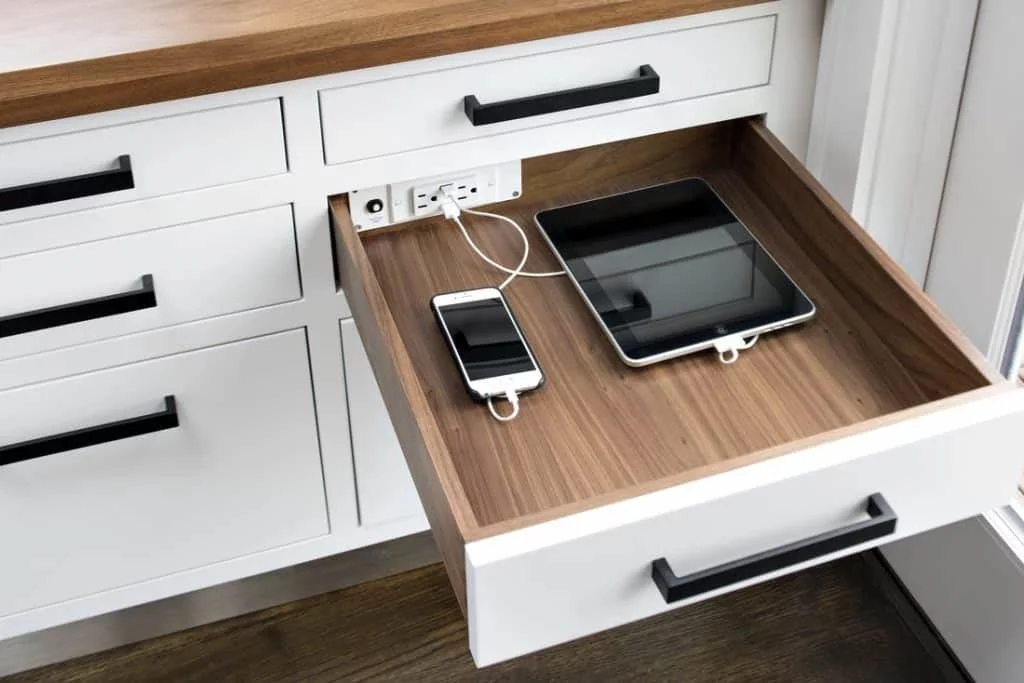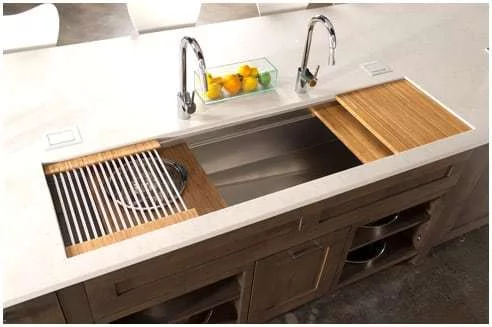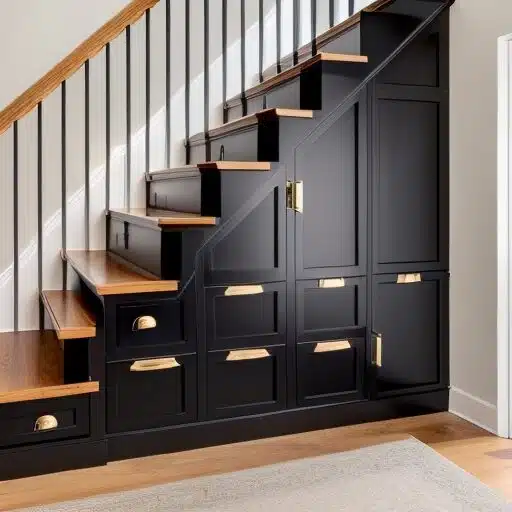
Interior Architecture vs. Interior Design
Interior architecture and interior design are two disciplines often used interchangeably but have distinct differences.
Understanding these differences is essential for anyone considering a career in these fields or seeking professional services in transforming living spaces.
In this article, we will delve into the basics of both disciplines, explore their key differences and similarities, discuss factors to consider when choosing between them, and examine their impact on living spaces.
McManus Kitchen and Bath is a full service remodeling company with an in-house design team and showroom right here in Tallahassee, FL.
We firmly believe people are happier and healthier when they have a well designed home that is attractive, easy to care for and that makes their daily routines more enjoyable.
If you’re ready to invest in your home and want to work with a company that pays attention to details and provides excellent customer service, schedule a discovery call.
Key Takeaways
- Interior architecture involves the integration of architectural principles, spatial planning, and construction knowledge to create innovative and efficient interior environments.
- Interior designers are skilled in understanding color theory, spatial arrangements, and the psychology of space.
- It is important to have both when designing a home, especially complex rooms like kitchens and bathrooms.
Understanding the Basics
Definition of Interior Architecture
Interior architecture can be defined as the art and science of designing and customizing interior spaces to enhance their functionality, safety, and aesthetic appeal. It involves the integration of architectural principles, spatial planning, and construction knowledge to create innovative and efficient interior environments.
Interior architecture goes beyond just the surface aesthetics of space; it delves into the structural elements that make up a building’s interior. This includes considerations like the flow of natural light, acoustics, and the overall spatial experience for occupants. Interior architects often work closely with architects and engineers to ensure that the interior spaces look beautiful and function seamlessly.
Definition of Interior Design
On the other hand, interior design focuses on selecting and arranging furniture, fixtures, and decorative elements within a space. It is more concerned with the visual and tactile aspects of the design, aiming to create a cohesive and pleasing atmosphere.
Interior designers are skilled in understanding color theory, spatial arrangements, and the psychology of space. They consider clients’ needs and preferences to create personalized interiors that reflect their personality and lifestyle. From choosing the right paint colors to sourcing unique furniture pieces, interior designers curate every aspect of space to bring their vision to life.
Related Post: How to Hire an Interior Designer
Hiring an interior designer can be a game-changer for your space. Whether you want to transform your home or office, an experienced professional can help bring your vision to life.
Key Differences Between Interior Architecture and Interior Design
Scope of Work
The scope of work for interior architects generally includes structural changes, such as modifying walls, ceilings, and floors to optimize the layout and functionality of a space. They may also be involved in lighting design, acoustics, and building code compliance. On the other hand, interior designers primarily work with finishes, furnishings, and decorative elements to enhance the visual appeal and functionality of an existing interior space.
When it comes to interior architecture, the focus is on the bones of the space. Interior architects have a keen eye for understanding a building’s structural integrity and how it can be improved or modified to better suit the needs of its occupants. They carefully analyze the flow of the space, considering factors such as natural light, acoustics, and spatial relationships.
By making strategic structural changes, interior architects can transform a space into a more functional and aesthetically pleasing environment.

Required Education and Training
Becoming an interior architect typically requires a bachelor’s degree in interior architecture or a related field and a deep understanding of building codes and regulations. While interior designers benefit from a formal education in interior design, they may have more flexibility in terms of educational background. They often pursue certification programs or apprenticeships to enhance their skills and knowledge.
Interior architects undergo rigorous training to develop a strong foundation in architecture’s design principles and technical aspects. They learn about structural engineering, building systems, and construction methods to ensure their designs are visually appealing but also safe and functional.
This comprehensive education equips interior architects with the expertise to handle complex projects that involve significant structural modifications.
Regulatory Framework
Interior architects may have to comply with stricter regulations and licensing requirements than interior designers. This is because the structural changes they propose can significantly impact a building’s safety and integrity. While not typically involved in structural modifications, interior designers must adhere to local building codes and regulations related to finishes, lighting, and other design elements.
The regulatory framework surrounding interior architecture ensures that professionals in this field have the qualifications and expertise to handle the complexities of altering a building’s structure. By implementing stricter regulations, authorities strive to safeguard the well-being of occupants and maintain the structural integrity of buildings.
On the other hand, interior designers focus on the aesthetic aspects of a space. They must adhere to regulations that govern the selection and installation of finishes, lighting fixtures, and other decorative elements.
Similarities Between Interior Architecture and Interior Design
Shared Goals and Objectives
Despite their differences, interior architecture and interior design share common goals. Both disciplines aim to create functional, aesthetically pleasing, and comfortable interior spaces that meet clients’ specific needs and preferences. They consider lighting, color schemes, and furniture arrangements to create a harmonious and well-designed environment.
Furthermore, both interior architects and interior designers prioritize the importance of creating spaces that look visually appealing and enhance the overall quality of life for the occupants. This involves a deep understanding of human behavior, ergonomics, and environmental psychology to ensure that the design meets the client’s aesthetic preferences and promotes well-being and productivity.
Overlapping Skills and Techniques
Interior architects and designers often employ similar skills and techniques in their work. Both disciplines require a keen eye for design, a deep understanding of spatial relationships, and proficiency in creating visual representations of concepts. Additionally, both professionals must possess strong communication and project management skills to collaborate effectively with clients, contractors, and other stakeholders.
Moreover, interior architects and interior designers need to stay updated on the latest trends in materials, technology, and sustainable design practices to ensure that their projects are visually appealing, environmentally friendly, and cost-effective in the long run. This commitment to continuous learning and professional development sets the foundation for successful and innovative design solutions that stand the test of time.
Want Some Inspiration In Your Inbox?
Choosing Between Interior Architecture and Interior Design
Factors to Consider
Several factors should be taken into account when deciding between interior architecture and interior design.
One should consider one’s strengths, interests, and career aspirations. If structural modifications and building regulations appeal to you, interior architecture may be the ideal choice.
However, if you are more drawn to the creative aspects of design, such as selecting furniture and finishes, interior design may be a better fit.
It’s important to note that while interior architecture focuses on the structural elements of a space, interior design is more concerned with the aesthetics and functionality of the interior environment.
Interior architects often work closely with architects and engineers to ensure that the design looks appealing and meets safety and structural requirements.
On the other hand, interior designers are experts in creating cohesive and visually pleasing spaces by selecting color schemes, furniture, and decor that align with the client’s needs and preferences.
Career Prospects in Both Fields
Both interior architecture and interior design offer promising career prospects. The demand for professionals in these fields is expected to grow as individuals and businesses increasingly recognize the importance of well-designed spaces.
Opportunities exist in architectural firms, design studios, construction companies, and even self-employment. Continuous professional development and staying up-to-date with industry trends are crucial to remaining competitive in both fields.
Furthermore, individuals pursuing a career in interior architecture may work on various projects, including residential, commercial, and institutional spaces.
The ability to blend creativity with technical knowledge is highly valued in this field, as interior architects are responsible for creating spaces that are not only visually appealing but also functional and safe for occupants.
Conversely, interior designers often collaborate closely with clients to understand their needs and preferences, translating them into innovative design solutions that enhance the overall quality of life within a space.
The Impact of Interior Architecture and Design on Living Spaces
Influence on Aesthetics
Interior architecture and design play a crucial role in shaping the aesthetics of a living space. Thoughtfully selected color palettes, materials, and finishes can create a certain ambiance and evoke specific emotions.
Whether it’s a cozy home or a vibrant office environment, the visual appeal of the interior can greatly impact the overall experience of the occupants.
Role in Functionality and Comfort
Beyond aesthetics, interior architecture and design contribute to a space’s functionality and comfort. Well-planned layouts, efficient use of space, and ergonomic considerations can greatly enhance a room’s usability and convenience.
Designers and architects meticulously consider sight lines, accessibility, and acoustics to create optimal living and working environments.
When creating a harmonious living space, interior architecture, and design also consider the psychological impact of different design elements.
For example, natural light and open spaces can promote well-being and productivity, while cluttered or poorly lit areas may induce stress or discomfort. B
y understanding how design choices influence human behavior and emotions, professionals in this field can craft environments that support the well-being of their occupants.
In addition to aesthetics and functionality, sustainability has become a key consideration in modern interior architecture and design. With a growing awareness of environmental issues, designers are incorporating eco-friendly materials, energy-efficient systems, and sustainable practices into their projects.
This not only reduces a space’s environmental footprint but also promotes healthier indoor air quality and long-term cost savings for the occupants.
Crafting the perfect living space requires a nuanced understanding of interior architecture and interior design.
At McManus, we excel in merging these disciplines to create spaces that are not only visually stunning but also functional and comfortable.

Your content goes here. Edit or remove this text inline or in the module Content settings.
H2 Heading with Keyword Phrase
Lorem Ipsum is simply dummy text of the printing and typesetting industry. Lorem Ipsum has been the industry’s standard dummy text ever since the 1500s, when an unknown printer took a galley of type and scrambled it to make a type specimen book. It has survived not only five centuries, but also the leap into electronic typesetting, remaining essentially unchanged. It was popularised in the 1960s with the release of Letraset sheets containing Lorem Ipsum passages, and more recently with desktop publishing software like Aldus PageMaker including versions of Lorem Ipsum

Your content goes here. Edit or remove this text inline or in the module Content settings.
H2 Heading with Keyword Phrase
Lorem Ipsum is simply dummy text of the printing and typesetting industry. Lorem Ipsum has been the industry’s standard dummy text ever since the 1500s, when an unknown printer took a galley of type and scrambled it to make a type specimen book. It has survived not only five centuries, but also the leap into electronic typesetting, remaining essentially unchanged. It was popularised in the 1960s with the release of Letraset sheets containing Lorem Ipsum passages, and more recently with desktop publishing software like Aldus PageMaker including versions of Lorem Ipsum

Your content goes here. Edit or remove this text inline or in the module Content settings.
H2 Heading with Keyword Phrase
Lorem Ipsum is simply dummy text of the printing and typesetting industry. Lorem Ipsum has been the industry’s standard dummy text ever since the 1500s, when an unknown printer took a galley of type and scrambled it to make a type specimen book. It has survived not only five centuries, but also the leap into electronic typesetting, remaining essentially unchanged. It was popularised in the 1960s with the release of Letraset sheets containing Lorem Ipsum passages, and more recently with desktop publishing software like Aldus PageMaker including versions of Lorem Ipsum
H2 Heading with Keyword Phrase
Lorem Ipsum is simply dummy text of the printing and typesetting industry. Lorem Ipsum has been the industry’s standard dummy text ever since the 1500s, when an unknown printer took a galley of type and scrambled it to make a type specimen book. It has survived not only five centuries, but also the leap into electronic typesetting, remaining essentially unchanged. It was popularised in the 1960s with the release of Letraset sheets containing Lorem Ipsum passages, and more recently with desktop publishing software like Aldus PageMaker including versions of Lorem Ipsum
